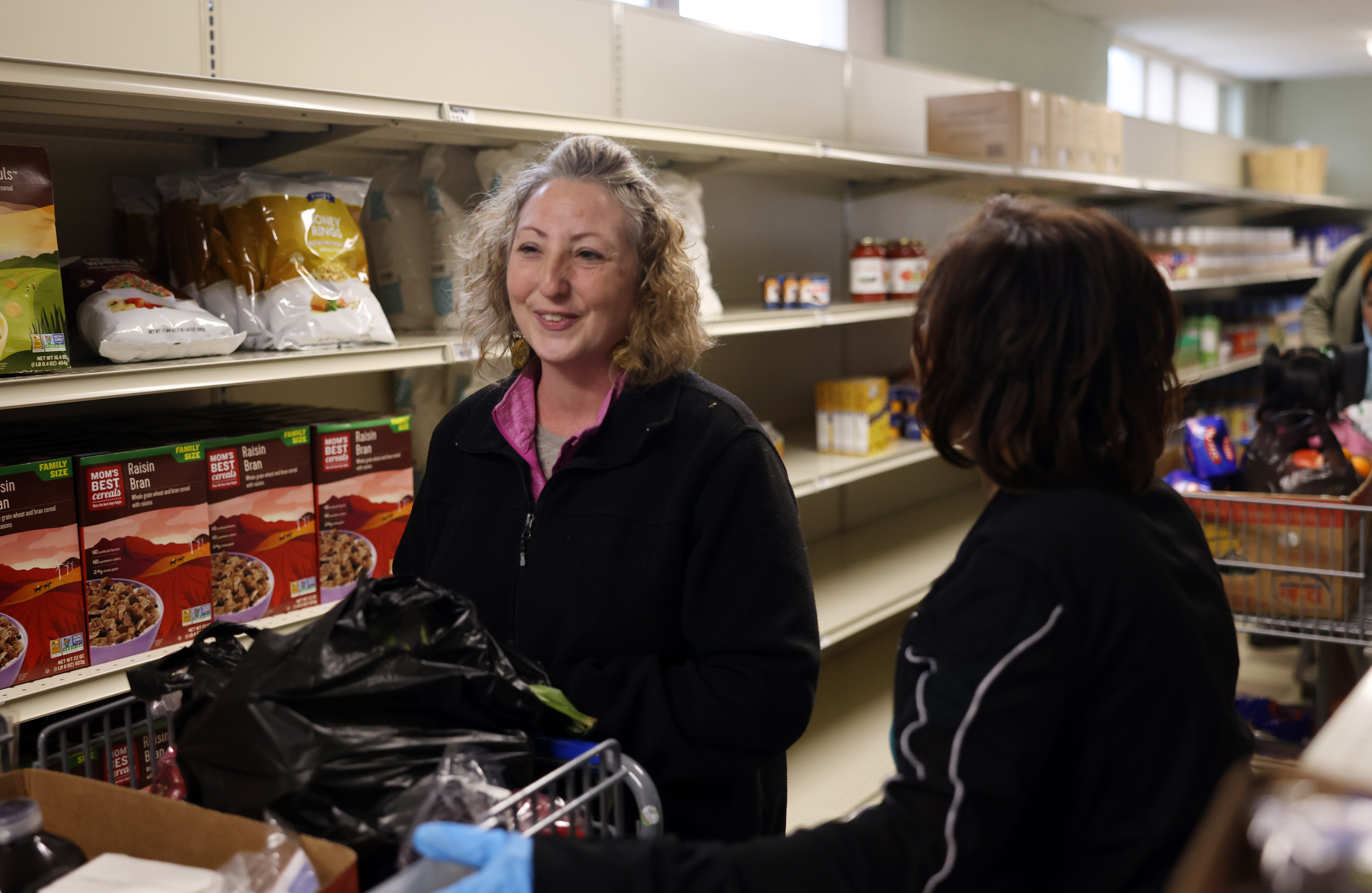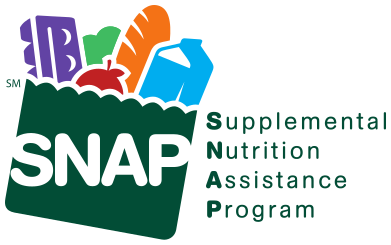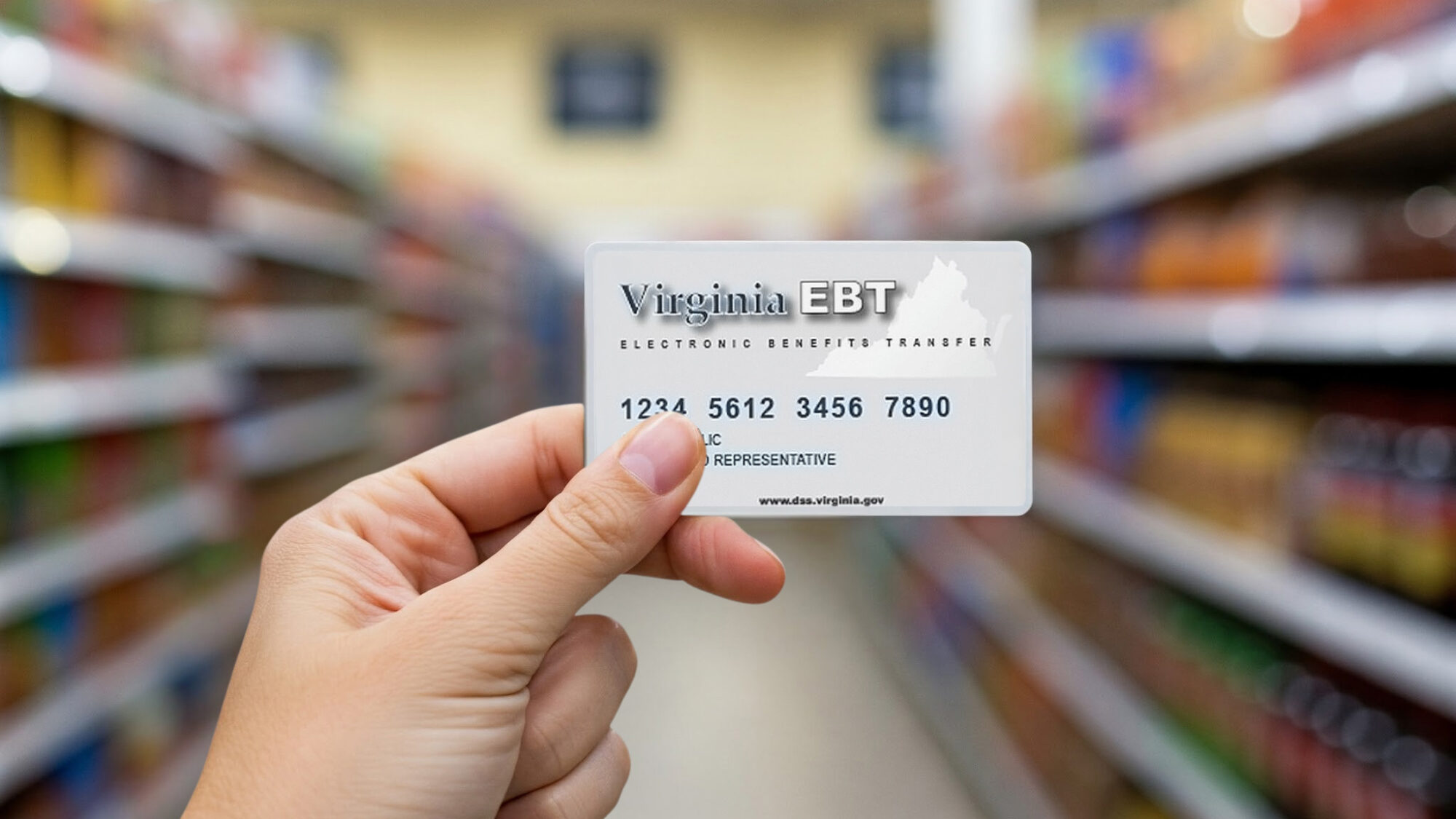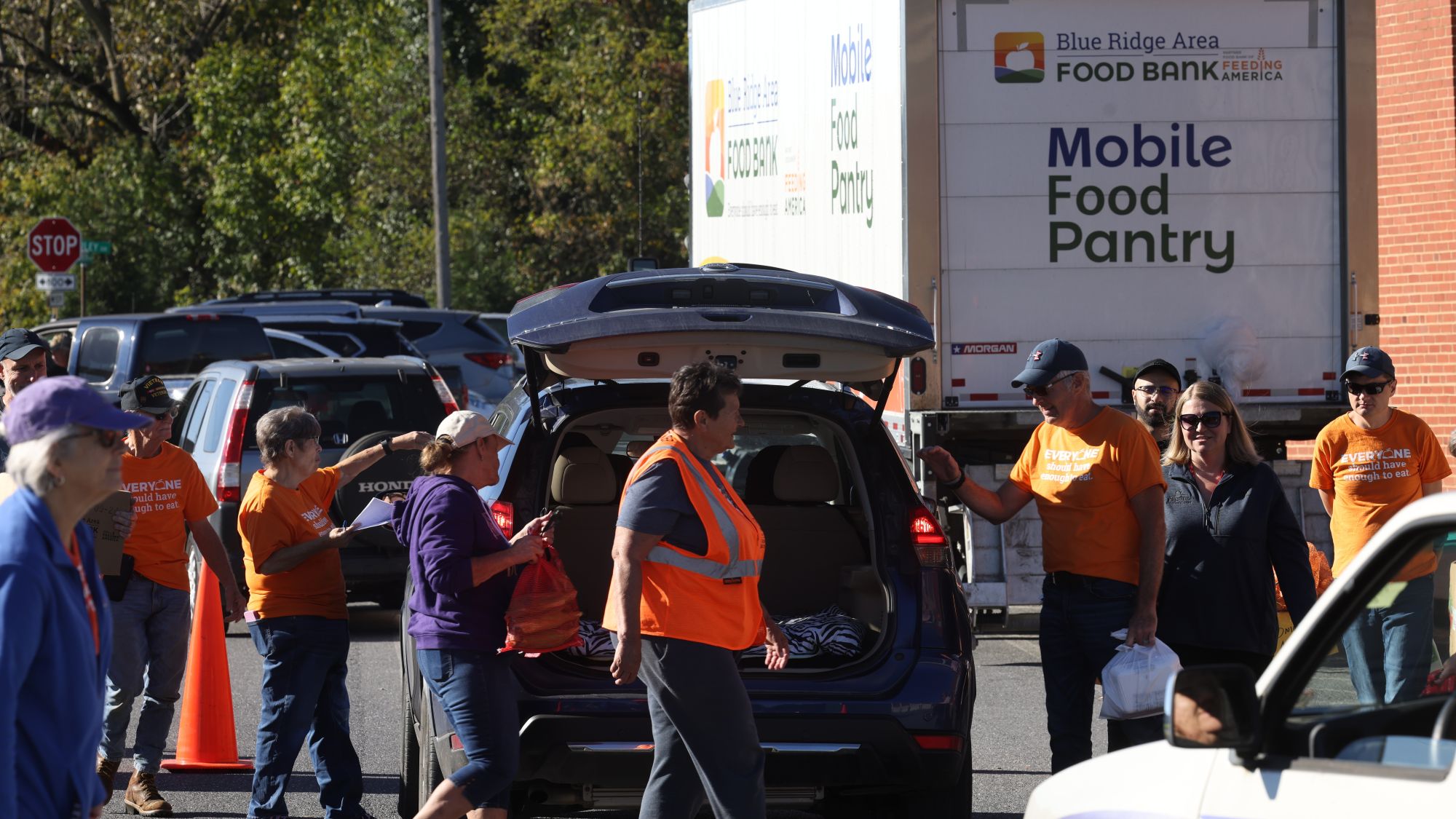As Congress debates the farm bill this fall, thousands of families across Virginia and beyond are holding their breath. At stake are critical programs like SNAP (Supplemental Nutrition Assistance Program, formerly food stamps) and TEFAP (The Emergency Food Assistance Program)—lifelines that millions rely on for survival.
Voices from the pantry lines
At the Blue Ridge Area Food Bank, we see the impact of these programs every day across central and western Virginia. And we hear the lived realities of our neighbors who turn to us when federal nutrition programs fall short.
For Tabitha, a stay-at-home mom of four—three with disabilities—SNAP once gave her the freedom to walk into a grocery store and buy what her children liked. That changed when her monthly SNAP benefit was slashed from $500 to just $60. Now, cereal and milk are staple meals, and trips to the grocery store are rare. “We miss going in the grocery store. The freedom … was amazing,” she told us, waiting in line at Park View Community Mission, one of our largest food pantry partners in Lynchburg. “We would be in a lot of trouble if the pantries weren’t there.”
Tabitha’s story is far from unique. We meet people every week who have worked hard their whole lives, contributed to their communities, and now find themselves in crisis. Vanessa, a retired nurse of 45 years, lost her SNAP benefits and now depends on the pantry for essentials. “It was only $23, but it helped. I put so much into the system, and now I’m here because I can’t afford groceries.”

Meet Tabitha
Lynchburg native Tabitha is one of 40 million Americans across the country who rely on SNAP to make sure her home pantry is filled with healthy foods for her and her family. But recent cuts to that benefit have made life a lot more difficult. Thankfully, a local food pantry provides Tabitha with the food she needs.
However, more cuts to essential federal food assistance programs might be on the horizon.
Why SNAP and TEFAP matter more than ever
These aren’t isolated anecdotes—they are echoes of a broader, national reality. SNAP is the country’s largest nutrition assistance program, serving more than 40 million Americans each year, including hundreds of thousands of Virginians. Data shows that SNAP not only reduces food insecurity but also improves health outcomes and economic stability. According to the USDA, every dollar in SNAP benefits generates $1.50 to $1.80 in economic activity, supporting local grocery stores, farmers, and supply chains.
Yet, despite its proven effectiveness, SNAP is under threat. Proposed cuts of $228 billion would shrink access to benefits at a time when need is climbing. Families like Cheena’s—where SNAP benefits were stolen and eviction looms—are already operating on the edge. Others, like Beth and Savannah, are working hard to rebuild their lives while waiting for their benefits to come through. The system is straining under the weight of these compounding challenges.
The emergency food network—including food banks and pantries—is straining, too. Pantry shelves are stretched thin, and pantries feel the ripple effects of every SNAP reduction. With limited food and funding, and a volunteer workforce that is aging and often overextended, the emergency food system was never intended to be a permanent replacement for federal nutrition assistance.
That’s where TEFAP comes in. The Emergency Food Assistance Program provides USDA foods to food banks like ours, helping us serve millions of meals to people facing hunger, while supporting farmers as well. TEFAP foods—high-quality, shelf-stable items like canned vegetables, fruits, proteins, and grains—make up roughly 20% of the food supply we distribute to our network of pantries and meal programs. Without TEFAP, our ability to meet growing community needs would be severely compromised. TEFAP is not just a supplement; it’s a cornerstone of how we support our neighbors with dignity.

Did you know?
The Supplemental Nutrition Assistance Program (SNAP) is one of the largest federal food assistance programs in the United States. For every meal distributed by food banks, SNAP provides nine.
Tell Congress: Keep our communities fed
The stories of our neighbors are as diverse as they are urgent: a veteran like Raleigh, living alone on a fixed income; a caregiver like Carla, supporting three family members with complex medical needs; a young mom like Ashley, disqualified from SNAP due to earnings just above the income threshold, even as she battles injuries and supports a family of five.
SNAP and TEFAP aren’t just about food. They are about dignity, stability, and opportunity. They are about being able to say “yes” when a child asks for a glass of milk. About keeping the lights on while still putting dinner on the table. And about giving people like Lois—waiting on a workers’ compensation claim—the chance to stay nourished and healthy while navigating a difficult chapter. The next farm bill must reflect reality on the ground. It must protect and strengthen SNAP and TEFAP, not weaken them. Our communities depend on it. Our neighbors are counting on us. When we invest in food assistance, we invest in people’s resilience, in public health, and in the strength of our entire economy.
Act now: your voice can make a difference
The farm bill is more than just legislation—it’s a lifeline for families, seniors, and children facing hunger.
By raising your voice, you can influence lawmakers to pass a strong Farm Bill that supports the most vulnerable among us. Learn how you can take action today.
Together, we can ensure that everyone has enough to eat. Advocate now—because hunger doesn’t wait.
“We need to make sure our elected officials in Congress have a crystal-clear understanding of the astounding levels of food insecurity in their districts and the critical importance of federal nutrition programs to community organizations.”

More ways to get involved
To help our lawmakers understand how critically important SNAP is in the effort to end hunger, we must raise our voices! When we band together, we have the best chance to succeed.
To learn more about SNAP and how the program works, you can visit this webpage.
To take immediate action and advocate for a stronger SNAP program, visit this webpage.
 Chew On This
Chew On This


